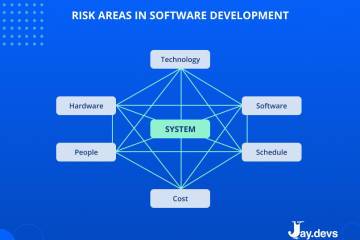Balancing the cost while delivering quality education can be a problem. E-procurement system is one of the strategic tools that the educational institution can use to cut on costs and enhance efficiency.
E-procurement is the acquisition of goods and services through electronic means, which has its advantages compared to the traditional procurement methods regarding its costs and efficiency. This blog discusses how such procurement can be efficient for educational institutions and improve procurement efficiency along with the institutions’ financial health.
Leveraging E-Procurement Solutions in Education
Implementing e procurement solutions within educational institutions transforms the traditional procurement process, making it faster, more cost-effective, and less prone to errors.
These systems integrate various procurement activities—including supplier management, purchase order processing, and invoice handling—into a single, unified digital platform. This shift not only streamlines administrative tasks but also provides significant strategic benefits to educational administrators.
Understanding the Benefits of E-Procurement
- Cost Savings:
E-procurement platforms enable educational institutions to access a wider range of suppliers, leading to increased competition and lower prices. Automated systems also reduce the administrative overhead associated with manual procurement processes, such as data entry and document handling, thus cutting operational costs further. Schools can leverage these savings to enhance educational programs or allocate funds to other critical needs.
- Enhanced Efficiency:
Automation of procurement processes eliminates repetitive tasks and speeds up transaction times. For instance, e-procurement systems can automatically match purchase orders with invoices and receipts, facilitating quicker approvals and payments. This efficiency not only frees up staff time but also accelerates the cycle from requisition to purchase; enabling schools to respond more swiftly to their needs.
- Improved Spend Visibility and Control:
Centralized data provided by e-procurement systems offers granular insights into all transactions. This comprehensive overview allows educational institutions to monitor spend in real time, adhere to budgets, and analyze spending patterns for better financial management. Enhanced visibility helps ensure that funds are used appropriately and can aid in forecasting future costs.
- Standardization of Procurement Processes:
E-procurement solutions ensure that all purchasing activities are conducted consistently and in accordance with institutional policies and external regulations. This standardization helps in minimizing errors and discrepancies, ensuring compliance, and fostering a culture of transparency and accountability within the institution.
- Environmental Benefits:
Transitioning to a paperless procurement process significantly reduces the environmental impact associated with paper use, including deforestation and waste. This aligns with the growing emphasis on sustainability in educational institutions and helps promote an eco-friendly campus.
- Increased Supplier Collaboration:
E-procurement systems streamline communication with suppliers by providing tools for direct interaction and real-time updates. This enhanced collaboration can lead to better negotiation of terms and improved service levels from suppliers. Schools benefit from stronger relationships with vendors, which can lead to further innovations and cost reductions.
- Data-Driven Decision Making:
With robust analytics tools, e-procurement platforms can aggregate and analyze purchasing data to provide actionable insights. Educational institutions can use this data to make informed decisions about vendor selection, contract renewals, and procurement strategies. This strategic approach can lead to improved outcomes and cost savings over time.
Implementing E-Procurement in Educational Institutions
The transition to an e-procurement system can be complex, involving changes to established procedures and potentially requiring significant training for staff. However, the long-term benefits far outweigh the initial hurdles. Here’s how educational institutions can effectively implement e-procurement:
- Needs Assessment
Before adopting an e-procurement system, it’s crucial to evaluate the current procurement processes to identify inefficiencies and specific requirements. This step involves analyzing existing workflows, understanding the needs of various departments, and pinpointing areas where automation could yield significant improvements.
- Vendor Selection
Choosing the right e-procurement software is pivotal. Look for vendors with a strong track record in the educational sector, as they are more likely to understand and cater to the specific challenges and compliance requirements of educational institutions.
Evaluate potential vendors on several criteria, including the functionality of their software, ease of use, compatibility with existing systems, quality of customer support, and overall cost-effectiveness.
- Stakeholder Engagement
Involving key stakeholders early in the process is essential for successful implementation. This includes engaging decision-makers, end-users, and technical staff.
Gather their insights and preferences to ensure the chosen solution meets the broad needs of the institution. Stakeholder buy-in is crucial for smooth adoption, as these are the individuals who will interact with the system daily.
- Training and Support
Once an e-procurement system is chosen, thorough training sessions for all users are imperative. Training should cover all features of the software and address specific use cases relevant to the users’ roles. Additionally, ongoing support should be arranged to help resolve any issues as users get accustomed to the system.
- Continuous Monitoring and Feedback
After implementation, it’s important to continuously monitor the performance of the e-procurement system and solicit feedback from its users. Regular assessments help identify any issues or areas for improvement. Feedback from daily users is invaluable as they are most familiar with the system’s day-to-day functionality.
Conclusion
E-procurement represents a significant opportunity for educational institutions to enhance their operational efficiencies and cost-effectiveness. By adopting modern e-procurement solutions, schools and universities can achieve better financial control, streamline their procurement processes, and dedicate more resources to their core mission of education.
As the education sector continues to face financial pressures, e-procurement offers a strategic advantage that can help institutions thrive in an increasingly complex educational landscape.



